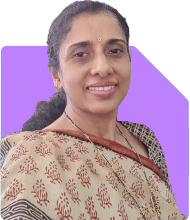Ramalingam Kalirajan |8324 Answers |Ask -Follow
Mutual Funds, Financial Planning Expert - Answered on Jun 10, 2024
He has an MBA in finance from the University of Madras and is a certified financial planner.
He is the director and chief financial planner at Holistic Investment, a Chennai-based firm that offers financial planning and wealth management advice.... more

Sir, i have taken early retirement from multinational co. @ age of 52,, My corpus detail is PF 1.16cr, PPF 23lac, FD 20lac, Shares+MF+PMS 1.05 CR, NPS 60lac, rent income 3lac per annuam, total 3.27cr. Having 3 house. reqired 1.25 lac per month.for expenses. Sir, is this sufficient for my retiremnt, or guide me best plan with this corpus
Firstly, congratulations on your early retirement and on accumulating a substantial corpus. At 52 years old, having Rs 3.27 crore across various investments is commendable. Your diversified portfolio includes PF, PPF, FD, shares, mutual funds, PMS, NPS, and rental income. This diversification is excellent for managing risk and ensuring steady income.
Income Management and Monthly Expenses
You require Rs 1.25 lakh per month for expenses, equating to Rs 15 lakh annually. Let’s assess your income sources and develop a strategy to ensure they meet your needs.
Current Income Sources
Rental Income: Rs 3 lakh per annum
This leaves a shortfall of Rs 12 lakh annually that needs to be covered by your investments.
Portfolio Assessment and Income Generation
Provident Fund (PF)
Your PF of Rs 1.16 crore can be a significant income source.
Strategy: Move a portion of your PF to Senior Citizens' Saving Scheme (SCSS) or a high-interest fixed deposit. These options provide regular income with low risk.
Estimated Return: Assuming a return of 7% annually, Rs 1.16 crore can generate around Rs 8.12 lakh per year.
Public Provident Fund (PPF)
Your PPF balance of Rs 23 lakh offers tax-free returns but is less liquid.
Strategy: Continue keeping this as it provides safe, long-term growth. Avoid withdrawing unless absolutely necessary.
Estimated Return: Assuming a return of 7% annually, Rs 23 lakh can generate around Rs 1.61 lakh per year.
Fixed Deposits (FD)
You have Rs 20 lakh in FDs, providing stable but modest returns.
Strategy: Laddering your FDs can help in getting better returns and maintaining liquidity.
Estimated Return: Assuming a return of 6%, Rs 20 lakh can generate around Rs 1.2 lakh per year.
Shares, Mutual Funds, and PMS
Your equity investments and PMS of Rs 1.05 crore are essential for growth. However, direct stocks and PMS come with higher risk and volatility.
Caution: Be extremely cautious about direct stock investments and PMS. These can be highly volatile and risky.
Recommendation: Consider redeeming your investments in direct stocks and PMS and reinvesting the proceeds into mutual funds. Actively managed mutual funds provide professional management and diversification.
Strategy: Shift funds to diversified mutual funds that align with your risk tolerance and financial goals. This reduces risk while aiming for steady growth.
Estimated Return: Assuming a conservative return of 10%, Rs 1.05 crore can generate around Rs 10.5 lakh per year through mutual funds.
National Pension System (NPS)
Your NPS corpus of Rs 60 lakh is crucial for your retirement.
Strategy: Keep this invested for growth. Use the NPS to purchase an annuity at 60 to ensure a steady income stream post-60.
Estimated Return: Assuming a return of 10%, Rs 60 lakh can grow significantly. Post-60, the annuity can provide additional income.
Total Annual Income Estimation
Let’s sum up the annual income generated by your corpus:
PF: Rs 8.12 lakh
PPF: Rs 1.61 lakh
FD: Rs 1.2 lakh
Shares, Mutual Funds, and PMS (after shifting to mutual funds): Rs 10.5 lakh
Rental Income: Rs 3 lakh
Total: Rs 24.43 lakh annually
This exceeds your requirement of Rs 15 lakh annually, providing a buffer for inflation and unexpected expenses.
Inflation Adjustment
Assume an average inflation rate of 6%. Your expenses will increase over time, so your investment returns must outpace inflation.
Current Expenses: Rs 1.25 lakh per month
Future Expenses: In 10 years, this could grow to approximately Rs 2.25 lakh per month due to inflation.
Investment Strategy for Inflation Protection
Equity Exposure
Maintain a significant portion in equities to combat inflation. Equities tend to outperform inflation over the long term.
Hybrid Funds
Balanced or hybrid funds offer a mix of equity and debt, providing growth and stability.
Systematic Withdrawal Plan (SWP)
Use an SWP from your mutual fund investments to provide a steady monthly income. This helps manage market volatility and provides regular income.
Risk Management
Diversification is key to managing risk. Your portfolio is already diversified across asset classes, which is excellent. Here are additional steps:
Health Insurance: Ensure you have adequate health insurance to cover medical expenses.
Life Insurance: Maintain sufficient life insurance to protect your family’s financial future.
Emergency Fund: Keep an emergency fund equivalent to 6-12 months of expenses in a liquid form.
Tax Planning
Effective tax planning can help maximize your returns.
Tax-Saving Investments: Utilize Section 80C deductions through investments in PPF, ELSS, and NSC.
Health Insurance: Claim deductions under Section 80D for health insurance premiums.
Capital Gains: Plan for long-term capital gains tax when selling shares or mutual funds. Use indexation benefits where applicable.
Regular Financial Review
Regular reviews ensure your financial plan stays aligned with your goals.
Annual Review: Conduct an annual review of your investments and expenses. Adjust your strategy based on changes in your life or financial markets.
Rebalancing: Rebalance your portfolio periodically to maintain your desired asset allocation.
Professional Guidance
Consulting a Certified Financial Planner can provide personalized advice.
Financial Plan: A CFP can create a comprehensive financial plan tailored to your needs.
Investment Advice: Benefit from their expertise in selecting and managing investments.
Goal Setting: Work with a CFP to set realistic financial goals and develop strategies to achieve them.
Financial Security for Your Family
Ensuring your family’s financial security is a top priority. Here’s how to approach family financial security:
Insurance Coverage: Ensure you have adequate health and life insurance coverage. This protects your family in case of unforeseen events.
Emergency Fund: Maintain a robust emergency fund to cover unexpected expenses. This provides financial stability and peace of mind.
Estate Planning: Plan your estate to ensure your assets are distributed according to your wishes. Consider writing a will and setting up a trust.
Financial security for your family provides peace of mind and stability.
Final Insights
Your current financial position is strong, with a well-diversified portfolio and a significant corpus. By optimizing your strategy, you can achieve a comfortable retirement. Focus on generating regular income, managing inflation, and minimizing risks. Regular reviews and professional guidance will ensure your financial journey is smooth and successful.
Be cautious about direct stocks and PMS investments. Redeem and reinvest these funds into diversified mutual funds for better management and reduced risk. This will provide more stable and predictable returns.
Best Regards,
K. Ramalingam, MBA, CFP
Chief Financial Planner
www.holisticinvestment.in
You may like to see similar questions and answers below
Ramalingam Kalirajan |8324 Answers |Ask -Follow
Mutual Funds, Financial Planning Expert - Answered on Apr 30, 2024
Ramalingam Kalirajan |8324 Answers |Ask -Follow
Mutual Funds, Financial Planning Expert - Answered on Apr 30, 2024
Ramalingam Kalirajan |8324 Answers |Ask -Follow
Mutual Funds, Financial Planning Expert - Answered on Apr 30, 2024
Ramalingam Kalirajan |8324 Answers |Ask -Follow
Mutual Funds, Financial Planning Expert - Answered on Jun 06, 2024
Radheshyam Zanwar |1608 Answers |Ask -Follow
MHT-CET, IIT-JEE, NEET-UG Expert - Answered on May 07, 2025
Samraat Jadhav |2272 Answers |Ask -Follow
Stock Market Expert - Answered on May 07, 2025
Samraat Jadhav |2272 Answers |Ask -Follow
Stock Market Expert - Answered on May 07, 2025
Prof Suvasish Mukhopadhyay |621 Answers |Ask -Follow
Career Counsellor - Answered on May 07, 2025
Milind Vadjikar |1208 Answers |Ask -Follow
Insurance, Stocks, MF, PF Expert - Answered on May 07, 2025
Dr Deepa Suvarna |154 Answers |Ask -Follow
Paediatrician - Answered on May 07, 2025
Dr Nagarajan J S K |373 Answers |Ask -Follow
NEET, Medical, Pharmacy Careers - Answered on May 07, 2025
Ramalingam Kalirajan |8324 Answers |Ask -Follow
Mutual Funds, Financial Planning Expert - Answered on May 07, 2025
Mayank Chandel |2254 Answers |Ask -Follow
IIT-JEE, NEET-UG, SAT, CLAT, CA, CS Exam Expert - Answered on May 07, 2025
Mayank Chandel |2254 Answers |Ask -Follow
IIT-JEE, NEET-UG, SAT, CLAT, CA, CS Exam Expert - Answered on May 07, 2025




























